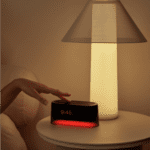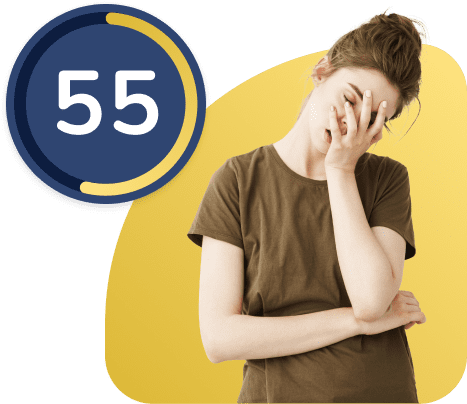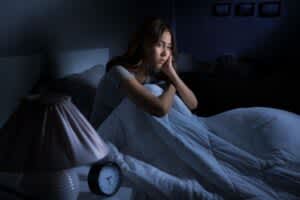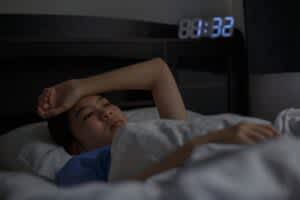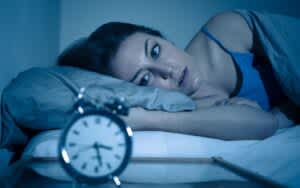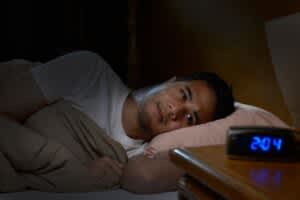Insomnia is a common health issue that involves trouble sleeping. In the past, there were many names for different types of insomnia, but over the last decade doctors have simplified the way they classify this sleep issue.
We cover the current terminology that health experts use to describe insomnia, as well as older terms you may still hear in conversation. We also cover how to tell the difference between a bad night’s sleep and insomnia.
What Is Short-Term Insomnia?
Sleep experts categorize most cases of insomnia as either short-term or chronic. Short-term insomnia is a type of insomnia in which symptoms last for less than three months.
All types of insomnia involve three core features:
- Difficulty sleeping
- Sufficient opportunities for sleep
- Daytime symptoms
Difficulty sleeping can include trouble falling asleep or staying asleep, including waking up too early or spending long periods awake at night. Unlike sleep deprivation, where there may not be enough time in a person’s schedule to get adequate rest, people with short-term insomnia have sleep issues even though they spend plenty of time in bed each night.
Daytime symptoms of insomnia may include:
- Daytime tiredness, fatigue, or loss of energy
- Irritability and mood changes
- DIfficulties with attention, concentration, or motivation
- Challenges in relationships, at school, or at work
- Persistent worry about sleep
In short-term insomnia, these symptoms persist for days or weeks, often after a stressful experience or life event. Common stressors that can trigger short-term insomnia include:
- Traveling or moving
- Relationship issues or divorce
- The death of a loved one
- A job loss
- A medical condition
Finding a resolution or learning to adapt to a stressful situation may improve short-term insomnia. However, if sleep issues persist, a person may develop chronic insomnia.
What Is Chronic Insomnia?
Chronic insomnia may be diagnosed when a person experiences the symptoms of insomnia at least three times a week for three or more months. Many people with chronic insomnia have symptoms that persist for years.
The symptoms of chronic insomnia are the same as short-term insomnia, namely trouble falling asleep, staying asleep, and daytime impairment from sleep loss. It’s common for people with chronic insomnia to have symptoms that ebb and flow, becoming more or less severe based on current stressors, medical conditions, or other factors.
While chronic insomnia can be triggered by a stressful experience, symptoms can also persist without a clear cause. In some people, short-term sleep issues can lead to chronic insomnia because the person gets into a cycle where short-term sleep loss increases stress and worry, which then make it harder to fall asleep.

What Is Other Insomnia?
Although most people are diagnosed with either short-term or chronic insomnia, sometimes a person’s symptoms don’t meet the full criteria for either disorder. In these rare cases, a doctor may provide a diagnosis of “other insomnia disorder.”
Additional Ways of Classifying Insomnia
In the past, there were several additional subtypes of insomnia, often based on a person’s specific symptoms or other characteristics.
In the most recent manual for classifying sleep disorders, experts have simplified the way that they categorize insomnia. While these types of insomnia are no longer given as a diagnosis, they may still be used by researchers and health professionals to describe a person’s condition.
Primary and Secondary Insomnia
Primary and secondary insomnia is a way of classifying insomnia based on its cause. Primary insomnia occurs independently of other diagnoses, while secondary insomnia refers to sleep issues that arise as a symptom of another physical or mental health condition.
While primary and secondary insomnia were once an important way of classifying insomnia, doctors often found it challenging to differentiate between the two in practice.
Additionally, ongoing research into the causes of insomnia shows that it’s often difficult to determine whether insomnia develops secondary to another health condition. Insomnia and other health conditions often have a complex relationship with insomnia developing before, after, or at the same time.
Behavioral Insomnia of Childhood
Behavioral insomnia of childhood is a specific set of sleep issues that are common in children. Symptoms include refusing or resisting going to bed, trouble falling asleep, or lengthy nighttime awakenings. Behavioral insomnia of childhood is believed to be caused by unhelpful patterns around bedtime or a caregiver’s challenges in setting limits.
For example, an infant or young child may get used to falling asleep while being held, rocked, or fed and have increasing difficulty falling asleep on their own. Challenges in setting and enforcing a bedtime can also lead to symptoms of insomnia.
Although this category remains useful for doctors trying to determine the cause of sleep problems in children, it’s now considered a form of either short-term or chronic insomnia.
Experts have shifted away from this diagnosis because people of any age can develop insomnia related to unhelpful associations with sleep and challenges in setting limits. For example, some teens or adults may have trouble falling asleep without the TV or struggle to stick to a consistent sleep schedule.
Sleep Onset Insomnia
Sleep onset insomnia is another way of categorizing sleep difficulties, still used by researchers and sleep experts to describe difficulty falling asleep. People who experience sleep onset insomnia may have trouble falling asleep when they want or spend excessive time in bed trying to fall asleep.
For most people, falling asleep takes about 10 to 20 minutes after getting into bed. However, people experiencing sleep onset insomnia may lay in bed for 30 minutes or more struggling to doze off.
Sleep Maintenance Insomnia
Sleep maintenance insomnia is a term used to describe difficulties staying asleep through the night. This type of insomnia is associated with frequent and lengthy nighttime awakenings or waking up too early in the morning.
Most adults can sleep through the night with limited time spent awake. However, a person with sleep maintenance insomnia may wake up multiple times throughout the night and struggle to fall back asleep for 30 minutes or more.
Early Morning Awakening Insomnia
Early morning awakening insomnia occurs when a person wakes up earlier in the morning than they planned. A doctor may consider waking up too early a symptom of insomnia when a person gets up 30 minutes or more before they should. Older adults are more likely to experience unwanted early morning awakenings as a symptom of insomnia.
Mixed Insomnia
Some people experience difficulties both falling asleep and staying asleep. This type of insomnia is called mixed insomnia because it involves symptoms of both sleep onset insomnia and sleep maintenance insomnia.
Insomnia vs. Occasional Trouble Sleeping
You’ve probably experienced a night where you lay in bed feeling wide awake, tossing and turning all night. But one bad night of sleep doesn’t always mean you have insomnia. Sleep issues associated with insomnia are persistent and lead to daytime symptoms.
If you experience more than the occasional bad night’s sleep, consider talking with your doctor. A doctor can give you a full evaluation, help you distinguish between insomnia and intermittent sleep issues, and develop a personalized treatment plan to improve your sleep.
Frequently Asked Questions about Types of Insomnia
Insomnia is a sleep disorder that may be diagnosed when a person has trouble falling asleep or staying asleep or when they wake up early in the morning and can’t go back to sleep. These sleep issues occur even when the person spends plenty of time in bed each night.
An occasional night of bad sleep happens to everyone. But insomnia is persistent, causes symptoms the next day, and can negatively impact a person’s ability to function in other areas of their life.
There are three types of insomnia disorder: short-term insomnia disorder, chronic insomnia disorder, and other insomnia disorder. Most people with insomnia have the short-term or chronic type.
The American Academy of Sleep Medicine publishes the International Classification of Sleep Disorders, which is the leading source of information on categorizing sleep disorders. The third edition of this manual simplified the classification system for insomnia, reducing the number of insomnia subtypes.
You may have insomnia if you have persistent trouble falling asleep or staying asleep and it’s causing next-day symptoms, but you’ll need to discuss your concerns with a physician to get an accurate diagnosis.
Insomnia is a common health complaint. While it’s common to experience intermittent trouble sleeping, insomnia has an ongoing effect on your sleep that interferes with your daily life. If you experience frequent sleep issues, talk with your doctor.
References (9)
The Sleep Doctor Forum: Real Experiences, Real Connections
Continue the discussion on the Sleep Doctor Forum. Connect with experts and fellow forum members on CPAP, sleep apnea, and all things sleep. A priceless resource that’s free to join.













